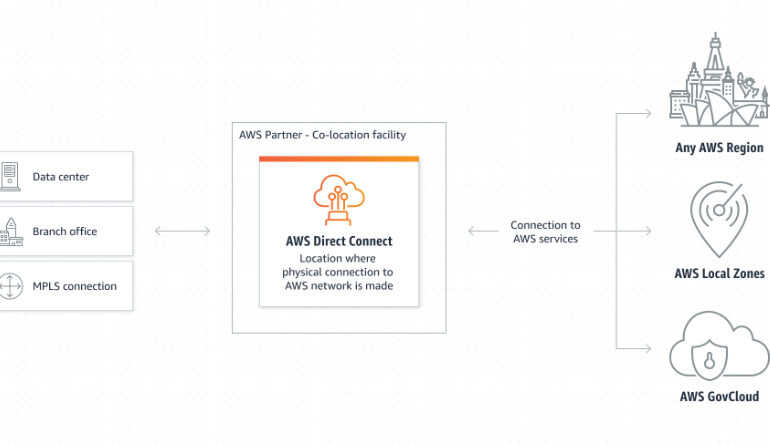What is the value of Penetration Testing on your company’s IT Systems?

Importance of penetration testing
In today’s digital landscape, safeguarding your company’s IT systems has never been more important. With cyber threats on the rise, it’s crucial to proactively assess your security measures to identify vulnerabilities before they can be exploited. This is where penetration testing comes in.
Penetration testing, also known as ethical hacking, involves simulating real-world cyber attacks to evaluate the security of your IT infrastructure. By adopting the perspective of a skilled hacker, penetration testers can uncover potential weaknesses and provide recommendations to mitigate risks.
By investing in regular penetration testing, you can ensure that your systems are resilient against evolving cyber threats. This proactive approach allows you to identify vulnerabilities and patch them before they can be exploited by malicious actors. This significantly reduces the risk of a breach and helps you maintain the confidentiality, integrity, and availability of your valuable data.
Penetration testing is not just a one-time activity. It should be an ongoing process to continually assess and improve your security measures. As new technologies and attack techniques emerge, regular testing ensures that your defences remain strong and up-to-date. It provides you with valuable insights into the effectiveness of your security controls and allows you to make informed decisions to strengthen your overall security posture.
In this article we discuss the following key areas:
- Types of penetration testing
- Process of conducting a penetration test
- Benefits of penetration testing
- Common vulnerabilities identified through penetration testing
- Best practices for conducting penetration tests
- Challenges of penetration testing
- Tools and technologies used in penetration testing
Types of penetration testing
Penetration testing can be categorized into different types based on the scope and objectives of the assessment. Let’s explore some common types of penetration testing:
- Black Box Testing: In this type of testing, the penetration tester has no prior knowledge of the target system. They simulate an attack without any insider information, just like a real hacker would. This helps uncover vulnerabilities that could be exploited by external malicious actors.
- White Box Testing: In contrast to black box testing, white box testing provides the penetration tester with full knowledge of the target system. This allows them to simulate an attack with a deep understanding of the internal architecture, configurations, and code. White box testing is useful for identifying vulnerabilities that could be exploited by insiders or for assessing the overall security of a system.
- Gray Box Testing: Gray box testing strikes a balance between black box and white box testing. The penetration tester has limited knowledge of the target system, typically including high-level system information or credentials. This approach allows for a more realistic assessment, as it simulates an attack by someone with partial insider knowledge.
- Web Application Testing: As web applications are a common target for cyber attacks, specialized penetration testing techniques are used to identify vulnerabilities in these systems. This includes testing for common web application vulnerabilities such as SQL injections, cross-site scripting (XSS), and insecure direct object references.
These are just a few examples of the types of penetration testing that can be conducted to evaluate the security of your IT systems. The specific type or combination of types chosen will depend on your organization’s unique requirements and risk profile.
Process of conducting a penetration test
The process of conducting a penetration test typically involves several key steps. While the exact methodology may vary depending on the testing approach and the organization’s requirements, the following steps provide a general framework for conducting a penetration test:
- Planning and Scoping: This initial phase involves defining the objectives, scope, and rules of engagement for the penetration test. It includes identifying the target systems, specifying the testing boundaries, and determining the testing timeline. A clear understanding of the goals and constraints is essential to ensure an effective and efficient assessment.
- Reconnaissance: In this phase, the penetration tester gathers information about the target systems, such as IP addresses, domain names, and network topology. This information helps identify potential entry points and vulnerabilities that could be exploited. Various techniques like open-source intelligence (OSINT), network scanning, and social engineering may be used to gather this information.
- Vulnerability Assessment: Once the information-gathering phase is complete, the penetration tester conducts a vulnerability assessment to identify potential vulnerabilities in the target systems. This involves using automated tools and manual techniques to scan for common weaknesses such as outdated software versions, misconfigurations, and known vulnerabilities.
- Exploitation: In this phase, the penetration tester attempts to exploit the identified vulnerabilities to gain unauthorized access to the target systems. This step involves simulating real-world attack scenarios to assess the impact and severity of the vulnerabilities. It helps determine if the vulnerabilities can be exploited to gain access, escalate privileges, or compromise sensitive data.
- Post-Exploitation: After successful exploitation, the penetration tester analyzes the compromised systems to understand the potential impact and to identify additional vulnerabilities that could be exploited. This phase involves documenting the attack path, compromised data, and potential countermeasures to mitigate the identified risks.
- Reporting: The final phase of a penetration test involves documenting the findings and recommendations in a comprehensive report. The report typically includes an executive summary, detailed technical findings, risk assessments, and recommended remediation steps. This report serves as a valuable resource for the organization to prioritize and address the identified vulnerabilities.
Benefits of penetration testing
Penetration testing offers several key benefits that contribute to the overall security and resilience of your IT systems. Let’s explore some of these benefits:
- Risk Mitigation: By proactively identifying vulnerabilities and patching them, penetration testing significantly reduces the risk of a successful cyber attack. It allows you to address weaknesses before they can be exploited, protecting your organization’s sensitive data and critical assets.
- Compliance and Regulatory Requirements: Many industries have specific regulations and compliance requirements related to data security. Regular penetration testing helps organizations demonstrate due diligence in securing their IT systems and complying with industry standards. This can prevent potential legal and financial consequences resulting from non-compliance.
- Enhanced Reputation and Customer Trust: In today’s digital age, customers value the security and privacy of their data. By investing in penetration testing, you show your commitment to protecting customer information and maintaining the confidentiality and integrity of their data. This can enhance your reputation and build trust with your customers.
- Improved Incident Response: Penetration testing provides valuable insights into your organization’s incident response capabilities. By simulating real-world attacks, you can evaluate your ability to detect and respond to security incidents effectively. This allows you to fine-tune your incident response procedures and improve your overall security posture.
- Cost Savings: While penetration testing requires an investment, it can result in long-term cost savings. By identifying and addressing vulnerabilities proactively, you can avoid the potentially significant financial and reputational losses associated with a successful cyber attack. Prevention is often more cost-effective than remediation.
These benefits highlight the value of penetration testing in strengthening your organization’s security defences, maintaining compliance, and protecting your valuable assets.
Common vulnerabilities identified through penetration testing
Penetration testing helps uncover various vulnerabilities that could be exploited by malicious actors. Some common vulnerabilities often identified during penetration testing include:
- Weak or Default Credentials: Many organizations fail to change default credentials for their systems, making it easy for attackers to gain unauthorized access. Penetration testing helps identify weak or default credentials, allowing organizations to enforce stronger password policies and implement multi-factor authentication where necessary.
- Unpatched Software and Firmware: Outdated software and firmware versions often contain known vulnerabilities that can be exploited. Penetration testing helps identify systems with outdated patches or firmware, allowing organizations to promptly update to the latest versions and address any known vulnerabilities.
- Misconfigurations: Improperly configured systems can provide attackers with easy entry points. Penetration testing helps identify misconfigured systems, such as open ports, weak encryption settings, or insecure network configurations. By addressing these misconfigurations, organizations can significantly reduce the attack surface and enhance their overall security posture.
- Insecure Application Code: Web applications are a common target for cyber attacks. Penetration testing helps identify vulnerabilities in application code, such as SQL injections, cross-site scripting (XSS), and insecure direct object references. By identifying and fixing these vulnerabilities, organizations can prevent attackers from exploiting application weaknesses.
- Lack of Access Controls: Inadequate access controls can allow unauthorized users to gain access to sensitive data or perform unauthorized actions. Penetration testing helps identify access control weaknesses, such as missing or improperly enforced permissions, allowing organizations to implement robust access control mechanisms.
These are just a few examples of the vulnerabilities that can be identified through penetration testing. By addressing these vulnerabilities, organizations can significantly strengthen their security defences and reduce the risk of a successful cyber attack.
Best practices for conducting penetration tests
To ensure the effectiveness and efficiency of penetration tests, it’s essential to follow best practices. Here are some key practices to consider when conducting penetration tests:
- Engage Certified Professionals: Penetration testing requires specialized skills and knowledge. Engaging certified professionals with experience in ethical hacking ensures that the assessments are conducted effectively and accurately. Certified professionals adhere to industry best practices and follow ethical guidelines.
- Define Clear Objectives and Scope: Clearly define the objectives and scope of the penetration test before initiating the assessment. This includes identifying the target systems, specifying the testing boundaries, and determining the testing timeline. Clearly defined objectives and scope prevent any misunderstandings and ensure that the assessment meets your organization’s specific requirements.
- Obtain Proper Authorization: Penetration testing involves simulating real-world attacks, which can potentially disrupt systems or cause unintended consequences. Always obtain proper authorization from the relevant stakeholders before conducting a penetration test. This ensures that the assessments are conducted legally and with the necessary permissions.
- Use a Systematic Approach: Follow a systematic approach to conducting penetration tests. This includes thorough planning, information gathering, vulnerability assessment, exploitation, and post-exploitation analysis. A systematic approach helps ensure that all areas are adequately assessed and that no critical vulnerabilities are missed.
- Document Findings and Recommendations: Document all findings and recommendations in a comprehensive report. This report serves as a valuable resource for understanding the identified vulnerabilities, their potential impact, and recommended remediation steps. A well-documented report helps organizations prioritize and address the identified vulnerabilities effectively.
- Continuously Improve Security Measures: Penetration testing should be an ongoing process to continually assess and improve your security measures. Regularly conduct penetration tests to identify new vulnerabilities, assess the effectiveness of existing controls, and stay ahead of evolving cyber threats. This proactive approach helps maintain a strong security posture and reduces the risk of a successful cyber attack.
By following these best practices, organizations can ensure that their penetration tests are conducted effectively, accurately, and with minimal disruption to their IT systems.
Challenges of penetration testing
While penetration testing offers significant benefits, it also comes with its own set of challenges. Here are some common challenges organizations may face when conducting penetration tests:
- False Positives and False Negatives: Penetration testing relies on the expertise of the testers and the tools used. False positives occur when a vulnerability is reported that doesn’t exist, while false negatives occur when a vulnerability is missed. Both scenarios can lead to inaccurate assessments and misallocation of resources. Organizations need to work closely with testers and validate reported vulnerabilities.
- Time and Resource Constraints: Conducting thorough penetration tests can be time-consuming and resource-intensive. Organizations need to allocate sufficient time and resources to ensure that the assessments are conducted properly. This includes engaging skilled testers, providing access to necessary systems, and allowing adequate time for the assessment and subsequent remediation efforts.
- Scope Limitations: Penetration testing is typically conducted within a defined scope and timeframe. However, the real-world attack surface is constantly evolving and expanding. Organizations need to understand the limitations of the scope and consider conducting additional assessments or adopting continuous monitoring solutions to address potential blind spots.
- Disruption of Services: Penetration testing involves simulating real-world attacks, which can potentially disrupt systems or cause unintended consequences. Organizations need to carefully plan and coordinate the testing to minimize any disruption to critical services. Proper communication and collaboration with relevant stakeholders are essential to ensure a smooth testing process.
- Complexity of Systems: Modern IT systems are often complex and interconnected, making it challenging to assess the entire infrastructure comprehensively. The complexity of systems can introduce additional layers of vulnerabilities that are difficult to identify and exploit. Organizations need to consider the complexity of their systems when defining the scope and objectives of the penetration test.
Despite these challenges, penetration testing remains a crucial component of a comprehensive security strategy. By understanding and addressing these challenges, organizations can maximize the effectiveness of their penetration tests and improve their overall security posture.
Tools and technologies used in penetration testing
Penetration testing relies on a variety of tools and technologies to conduct effective assessments. These tools help automate certain tasks, streamline the testing process, and enhance the overall efficiency of the assessment. Let’s explore some commonly used tools and technologies in penetration testing:
- Nmap: Nmap is a powerful network scanning tool that helps identify open ports, services, and potential vulnerabilities in target systems. It provides valuable information about the target network and helps in the initial reconnaissance phase of a penetration test.
- Metasploit Framework: Metasploit is a widely used penetration testing framework that provides a comprehensive set of tools for exploiting vulnerabilities in target systems. It simplifies the process of identifying and exploiting vulnerabilities, making it a popular choice among penetration testers.
- Burp Suite: Burp Suite is a web application security testing tool that helps identify vulnerabilities in web applications. It includes features such as web vulnerability scanning, interception, and manipulation of HTTP requests, and automated testing of web applications.
- Wireshark: Wireshark is a network protocol analyzer that allows penetration testers to capture and analyze network traffic. It helps identify potential security issues, such as unauthorized network access, insecure communication protocols, or the presence of malicious activities.
- Kali Linux: Kali Linux is a widely used Linux distribution specifically designed for penetration testing and ethical hacking. It includes a vast collection of pre-installed tools and utilities that make it easier for penetration testers to perform various testing activities.
- Password Cracking Tools: Password cracking tools, such as John the Ripper and Hashcat, are used to test the strength of passwords and identify weak or easily guessable passwords. These tools help assess the effectiveness of password policies and identify accounts that are vulnerable to brute-force attacks.
- Exploit Databases: Exploit databases, such as Exploit Database and Metasploit Framework, provide a collection of known vulnerabilities and associated exploits. These databases help penetration testers identify vulnerabilities in target systems and select appropriate exploits for testing.
These are just a few examples of the tools and technologies used in penetration testing. The choice of tools depends on the specific requirements of the assessment.
Conclusion
Simulating real-world attacks on the different elements of your IT environment through Penetration Testing Services, you can test the detection and response capabilities of your technology, processes and people and identify where vulnerabilities exist in your environment. Protecting your company and its systems requires continuous testing and is best left to experienced professionslas in this field. Staying up to date on the latest attack vectors and methods is a full time job and up-to-date knowledge is critical to improving your cybersecurity posture. Use a competent and experienced Cyber Security specialist to protect your company’s assets now!







































